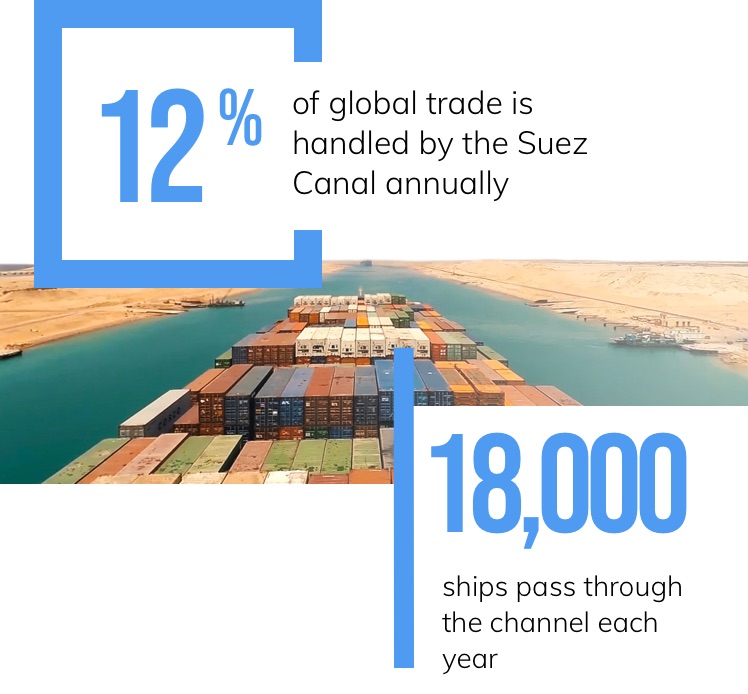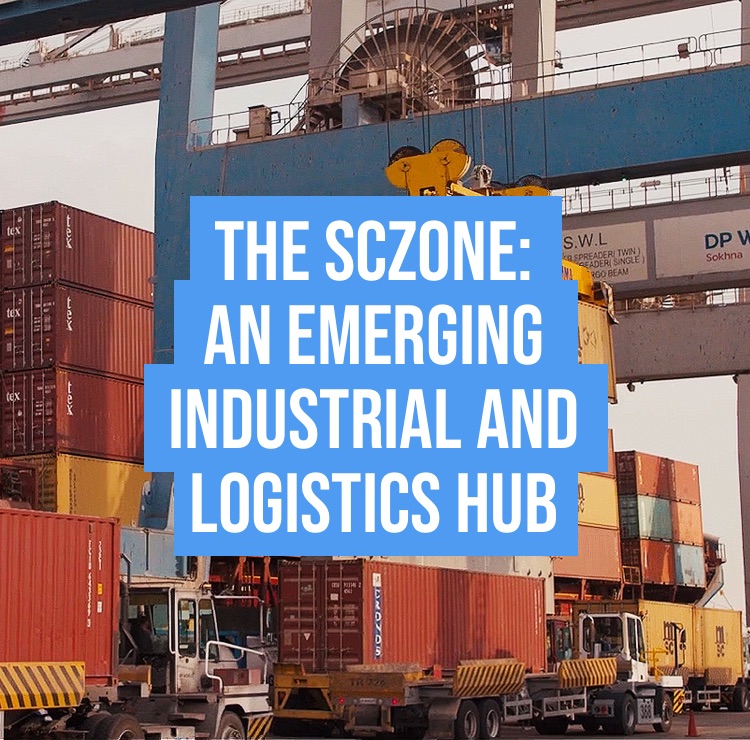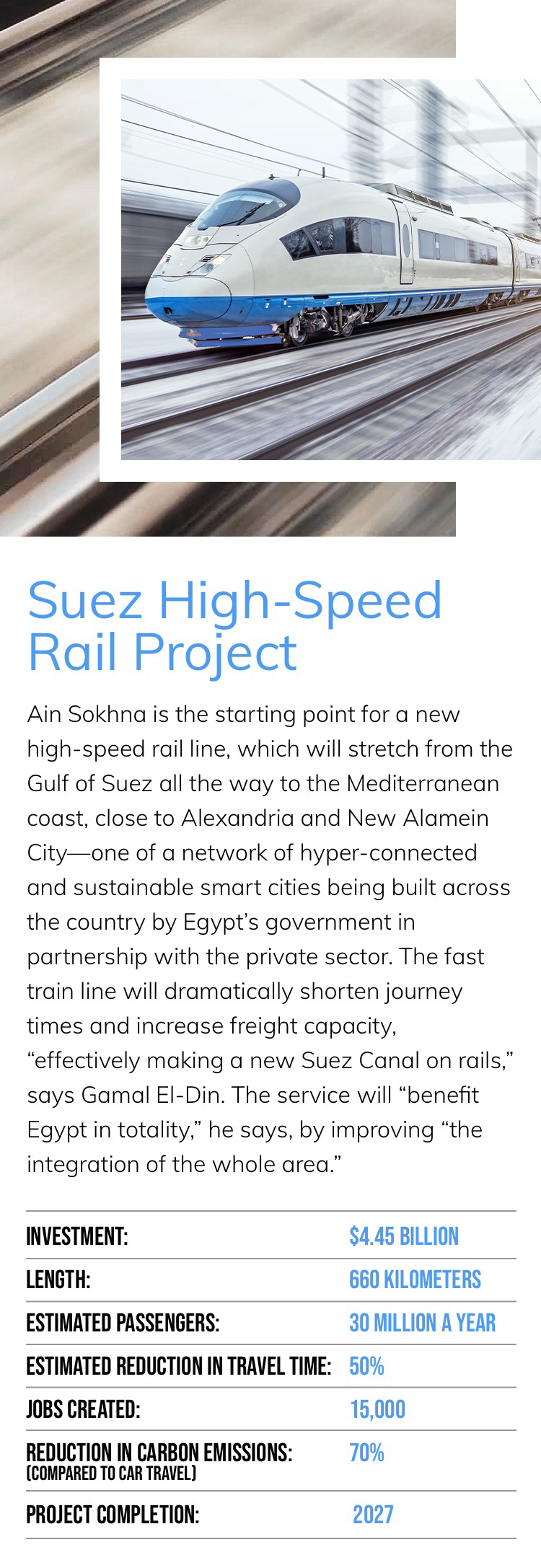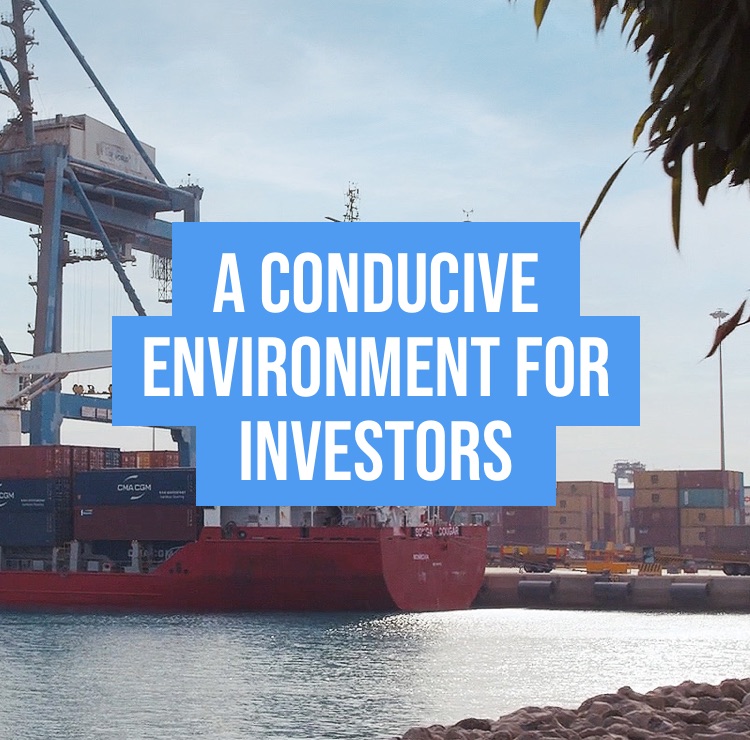The Modern Trading Hub at the Center of the World’s Most Historic Waterway
More than 150 years after the Suez Canal opened, the world’s best-known man-made waterway is generating record levels of traffic and unprecedented income, driving further development of this vital economic lifeline.
The inauguration of the Suez Canal in 1869 instantly transformed global trade, enabling ships to cross from the North Atlantic to the Indian Ocean without the need to circumnavigate Africa. The waterway rapidly became the most important artery for world trade and remains responsible for the transit of one tenth of world trade. According to the Suez Canal Authority, the canal pulled in a record 6.3 billion dollars' worth of revenues in 2021.
This growth points to the future success of the Suez Canal Economic Zone (SCZONE), an Egyptian government megaproject designed to unlock the full potential of the famous channel, which links the Mediterranean to the Red Sea.


The Suez Canal already handles 12% of global trade and 18,000 ships pass through the channel each year. In order to maximize the potential of this traffic, the SCZONE was launched in 2015. “It was very important to develop logistics and economic zones around the canal to capitalize on the trade and the number of ships that are crossing every year,” says Yehia Zaki, former Chairman of the SCZONE.
Egypt is at the center of global trade. The SCZONE is vital in connecting investors to the rest of the world from Egypt.
— Walid Gamal El Din, Chairman of the General Authority for SCZONE


The SCZONE, extending over 461 square kilometers, comprises four industrial parks and six ports. Each port is strategically placed from north to south along the canal at East Port Said, Qantara, East Ismailia and Ain Sokhna. “Each one is different, and their location is their beauty, because each one depends on its end market,” explains Walid Gamal El Din, Chairman of the General Authority for SCZONE. “If exporting to Europe and Americas, it’s better to be located in East Port Said, while for investors targeting Asia and Africa, it’s better to be located in Ain Sokhna.”
Each hub within the zone is dedicated to selected industrial sectors. East Port Said is being developed as a hub for pharmaceuticals and automotive parts, while Ain Sokhna specializes in heavy industries, including petrochemicals, ceramics, and fertilizers. Qantara caters to SMEs and agribusinesses, while East Ismailia is dubbed “Technology Valley” for its emphasis on high tech, research, and renewable energy. In total, 15 sectors have been prioritized, including ship fuel bunkering, logistics and data centers. “We have studied the [international] market; we have studied the world’s needs,” says Zaki.


The six ports in the SCZONE are undergoing major development. Three are on the Mediterranean coast: East Port Said, which services a range of manufacturing activities including automotive engineering, construction and textiles, is mainly operated by shipping giant Maersk and was among the top-performing ports worldwide in 2020. West Port Said, one of Egypt’s most important commercial ports, handles 8.7 million tons of multi-purpose cargo annually. Al Arish Port, which specializes in dry bulk, general cargo and agricultural products, is a 40-acre site being renovated to international standards.
Three more ports are situated in the south of the SCZONE on the Gulf of Suez, with close access to the Red Sea. Al-Tor Port is focused on services for oil and gas companies. Adabiya Port handles dry bulk, liquid bulk, and cargo. Ain Sokhna, where the quay walls and logistics areas are being extended, will be the biggest port in Egypt when development work is completed in 2023. Operated by DP World, the port is “serving Africa and is a gateway to inland Egypt,” Zaki explains.




The SCZONE is already home to 250 operational enterprises. With attractive incentives for investors, it aims to generate 1 million good-quality jobs by 2030.
The Egyptian government is encouraging investors into the SCZONE with a series of financial incentives, notably an exemption on customs tax and a zero VAT rate inside the zone when importing from the local market or abroad; a 14% VAT rate is applied to goods exported from the economic zone to the local market.
According to Al-Mashat, the government’s dynamic approach ensured that the SCZONE and other major development projects partner effectively with private investors. “This is a government that understands the importance of private sector engagement and has, over several years, implemented reforms that address the impediments and bottlenecks in each sector.”
The benefit to Egypt’s people is clear: The SCZONE has already created 100,000 job opportunities. “That number has increased dramatically and will increase in the future,” says Gamal El-Din. “The SCZONE—and Egypt as a whole—has a very talented workforce that enables investors to operate, and we have vocational training centers for the extra skill sets required.”
Placing Egypt at the center of global trade, the SCZONE connects continents and creates new investment opportunities “The Suez Canal is very important for the Egyptian people—it is in their hearts, in their minds,” says Zaki. “People look to it as a dream that will realize in the near future and serve the Egyptian GDP.” Now the dream is being made real in the form of strong and consistent economic growth.
